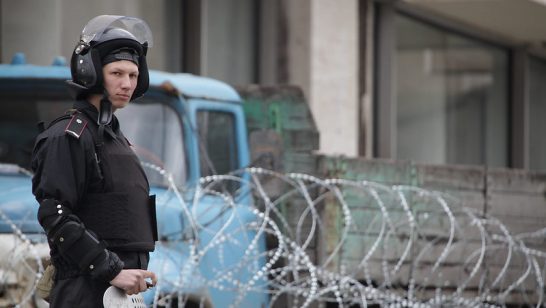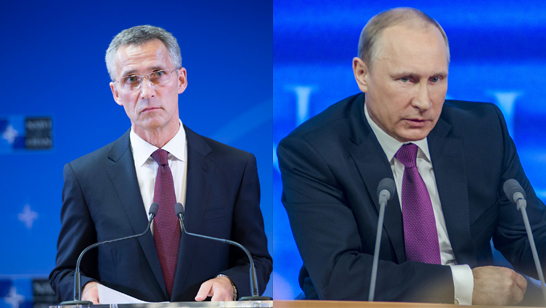
The unfolding horror in Ukraine has rightly brought calls for an immediate ceasefire and the opening of humanitarian corridors. These are vital, but Russia’s approach to these measures in Syria means that securing them in Ukraine will require caution and careful negotiation. While many factors differentiate the conflicts in Syria and Ukraine, certain similarities suggest Syria may offer some relevant lessons about Putin’s military and diplomatic strategy. Diplomats and policymakers should therefore draw on the Syrian experience to prevent civilian casualties and to ensure that ceasefires and humanitarian access negotiations avoid repeating the same pitfalls.
In Syria, ceasefires and deconfliction have been most successful and sustainable when mutually agreeable ceasefire or access conditions aligned with Putin’s strategic ambitions and military calculations. A truce agreement between Russia and Turkey in Syria’s north-west has more-or-less held for the last two years, while ceasefire lines and deconfliction arrangements across the north-east between Russia, the US, and Turkey, have also been sustained since 2019. Both examples have seen pockets of violence or cross-line attacks, but nonetheless represent meaningful de-escalation agreements.
By contrast, agreements have had limited or scant success in geographical and strategic contexts where Russia’s ambitions were more maximalist: military conquest and capitulation of populations. It is this that makes the Ukraine context so concerning for those involved with Syria, given that Putin’s stated aims in Ukraine, especially “demilitarisation” and so-called “denazification”, seem to amount to the occupation of the entire country and to regime change. If these early comments do reflect Russia’s actual ambitions for the invasion, in the short term Putin is unlikely to agree to, or implement, nationwide ceasefires until the utility of a broad ceasefire can be married with these ambitions, or the cost of the conflict becomes too burdensome––militarily or domestically––to bear. Meanwhile, the Ukrainian government’s current position is that there needs to be a complete withdrawal of Russian troops from all Ukrainian territory, though this too will be challenged over time. Presently, it is within this seemingly intractable equation that deconfliction, ceasefires, localised humanitarian access, evacuation, and corridor negotiations will occur. It is here that lessons from Syria may be of the most value.
When Putin officially entered the Syrian conflict militarily, broad frontlines cleaved the country’s non-state-controlled north from the patchwork of control dynamics stretching across the country’s centre and south. Many opposition-controlled pockets in south and central Syria were encircled or besieged. Some were de-escalated through local truces, which were used to contain dissent and conflict as Syrian troops lacked the capacity to shift conflict dynamics dramatically. This theatre was where Putin developed the military strategy we have seen playing out in the early days of his invasion of Ukraine. The following are just a few of the considerations from that ‘Syria playbook’ that may be relevant to those negotiating ceasefires and humanitarian corridors or pauses in Ukraine.
Russia had a track record in Syria of utilising ceasefires and humanitarian access agreements for strategic gain or agreeing to ceasefires they did not comply with — a phenomenon that is already being seen in Ukraine — making negotiations devilishly complicated. Emma Beals
Russia had a track record in Syria of utilising ceasefires and humanitarian access agreements for strategic gain or agreeing to ceasefires they did not comply with — a phenomenon that is already being seen in Ukraine — making negotiations devilishly complicated. One ceasefire in Syria in February 2016 was unanimously agreed at the UNSC, and while strikes and clashes continued at a low level, it more or less held into April. However, this period saw some of the worst humanitarian conditions in the conflict. The systematic denial of food and humanitarian assistance was used as a weapon against besieged populations in the absence of heavy military action. Humanitarian access negotiations were exploited to further military ambitions; on one occasion in besieged eastern Ghouta, aid deliveries were permitted to just half of the enclave, causing in-fighting between the leadership of the two halves and allowing Russia and their allies to seize territory.
Meanwhile, this period of relative calm allowed Russia, Syria and their allies to lay the groundwork for the coordinated military campaign that followed the ceasefire’s collapse. Here began the strategy of wiping out one town or community after another with tightened sieges and heightened military bombardment––characterised by attacks on residential areas, infrastructure, humanitarian infrastructure, and civilians––that did not relent until each territory capitulated. This began with a campaign that laid siege to eastern Aleppo city in June 2016––facilitated by the break in the fighting––and continued for two and a half years. In effect, the local truces in each area had contained the population and slowly broken them until such time as the military capacity to break them became available. In Ukraine, it appears that Russian troops have become bogged down in places, with advances slowing and resupply proving challenging. Local ceasefires may become attractive to Russia when regrouping and resupplying forces in critical areas are prioritised. Ceasefires that do not also require withdrawal or prevent military manoeuvring may be followed by periods of heightened conflict and violence.
A later UNSC agreement to allow full humanitarian access and civilian evacuation in east Aleppo in December of 2016 was also ignored until an eleventh-hour evacuation was brokered in the territory. A continuous 30-day ceasefire in Eastern Ghouta was agreed in UNSC Resolution (2401) in 2018 against the backdrop of another ferocious military campaign against that besieged area. The ceasefire was never implemented, and the population surrendered in April after a crescendo in violence that included chemical weapons attacks. In 2017, another attempt to reduce the violence in Syria saw ‘de-escalation’ agreements made between Russia, Turkey, and Iran through the Astana format in which the three countries participated in talks. While they did provide periods of respite from the violence for the four territories specified as de-escalation zones for a limited period, they also in practice allowed for Syrian and Russian management of these larger pockets of resistance so they could later be conquered one by one. Of the four areas, only one––Syria’s north-west––remains outside Syrian and Russian control, with the truce there being of strategic value and logic to Russia for at least the time being. In all areas of Syria where total military or political victory was the aim, only capitulation ultimately led to an end to the violence. This experience suggests that in Ukraine, Russia may apply a similar approach where their ambition is the same.
During heavy hostilities, Russia utilised agreements around the general need for humanitarian corridors to announce the locations and terms unilaterally on its own terms, ultimately rendering them useless or even counterproductive. In 2018 in Ghouta, Russia offered ‘humanitarian’ corridors for civilians to evacuate the area. Still, they were not agreed by both sides, which meant international organisations did not come to monitor or assist, and very few civilians took up the opportunity to use them during the daily five-hour pause in bombing. A key reason for this lack of trust from civilians was that evacuation was into government/Russia controlled territories.
In Ukraine, as Russian troops advance, evacuations should instead take place through corridors agreed by both parties, which crucially must allow civilians to exit into territory controlled by Ukraine if they choose, unlike some of the early evacuation routes Russia has offered, which lead only into their own country, or to their ally Belarus. Where possible, international monitors or organisations should ensure the protection of civilians, as well as humanitarian aid workers and goods.
Even when forcing resistant populations into submission, the agreements made between Russian interlocutors and the local community were not kept. In many cases, this failure to implement saw the Russian Military Police, who acted as ‘security guarantors’, withdraw prematurely from areas, leaving populations vulnerable. Many promises were made to populations in return for “surrender”, yet later broken: grace periods for military conscription, promises of security guarantees for individuals wanted for dissent, freedom of movement, the return of prisoners and detainees, and provision of essential goods and services. As Russia attempts to take over political control of towns and cities through negotiations or military means, they will find dealmaking and governance of resistant populations in these areas particularly difficult, more so if they fail to meet promises made during negotiations.
These lessons do not mean that humanitarian access, humanitarian corridors, and ceasefire negotiations should not be attempted at every available chance. The sheer force of the military campaign in the cities and regions already affected must be stopped. However, policymakers and negotiators must be conscious of the potential pitfalls and bear-traps inherent in the Russian approach to the negotiation and implementation of humanitarian corridors in Syria to prevent the same outcomes and atrocities.
The opinions articulated above represent the views of the signatories and do not necessarily reflect the position of the European Leadership Network or the entirety of its membership. The ELN’s aim is to encourage debates that will help develop Europe’s capacity to address the pressing foreign, defence, and security policy challenges of our time.
Image: Wikimedia commons, Міністерство внутрішніх справ України



